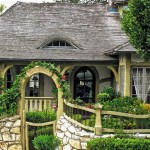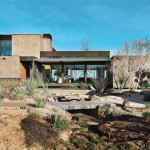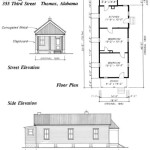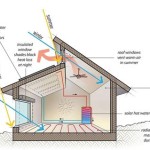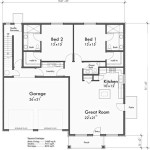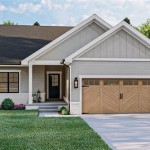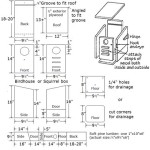Design Your Dream Home House Plan With Mother-In-Law Suites in Maryland
The demand for multigenerational living is on the rise, making house plans featuring mother-in-law suites increasingly popular in Maryland. Designing a home to accommodate both independent living and close family proximity requires careful consideration of various factors, from spatial layout to accessibility and privacy. This article explores the key elements to consider when designing your dream home in Maryland with a mother-in-law suite, ensuring a comfortable and functional living space for all residents.
Maryland, with its diverse communities and varying property sizes, presents unique opportunities and challenges for incorporating accessory dwelling units (ADUs), often referred to as mother-in-law suites. Local zoning regulations, building codes, and homeowner association rules can significantly impact the design and construction process. Therefore, thorough research and consultation with local authorities and experienced architects are crucial before embarking on the project.
A well-designed mother-in-law suite can offer numerous benefits. It provides independent living space for aging parents, allowing them to maintain their autonomy while residing close to their family. It can also serve as a guest suite, a rental unit (where allowed by local regulations), or a home office. Furthermore, it can increase the overall property value and appeal to a wider range of potential buyers in the future.
Defining the Purpose and Needs of the Mother-In-Law Suite
The first step in designing a house plan with a mother-in-law suite is to clearly define its purpose and the specific needs of its intended occupants. This involves considering factors such as the number of occupants, their mobility levels, their lifestyle preferences, and their individual needs. For instance, an elderly parent with mobility limitations will require a design that prioritizes accessibility, while a young adult seeking independence may prioritize privacy and a self-contained living space.
If the suite is intended for an aging parent, consider incorporating features such as wider doorways and hallways to accommodate wheelchairs or walkers, grab bars in bathrooms, and lever-style door handles. Non-slip flooring in bathrooms and kitchens can also enhance safety. Additionally, consider the placement of light switches and electrical outlets, ensuring they are easily accessible.
For increased independence, a fully self-contained suite should include its own kitchen, bathroom, living area, and bedroom. This allows residents to maintain their privacy and manage their daily routines without relying on the main house. However, if the suite is intended for shorter stays or occasional use, a kitchenette may suffice instead of a full kitchen.
Careful consideration should also be given to the level of interaction between the main house and the mother-in-law suite. Will there be a shared entrance, or will the suite have its own separate entrance? Will there be a connecting door between the two spaces, or will they be completely independent? These decisions will impact the overall layout and functionality of the home.
Furthermore, consider any specific medical needs that the occupants may have. If medical equipment is required, ensure that the suite has sufficient space to accommodate it. If frequent medical visits are expected, consider the proximity of the suite to the main entrance and parking area.
Designing for Accessibility and Universal Design Principles
Accessibility is a paramount consideration when designing a mother-in-law suite, particularly if it is intended for elderly or disabled individuals. Universal design principles aim to create spaces that are usable by all people, to the greatest extent possible, without the need for adaptation or specialized design. Incorporating universal design features can significantly enhance the comfort and functionality of the suite for all occupants, regardless of their age or abilities.
Ramps or zero-step entries provide easy access for wheelchairs or walkers. The Americans with Disabilities Act (ADA) provides guidelines for ramp slopes and widths. Interior doorways should be at least 32 inches wide to accommodate wheelchairs. Hallways should be at least 36 inches wide to allow for easy maneuverability.
Bathrooms should be designed with accessibility in mind. A roll-in shower with a handheld showerhead and a fold-down bench provides a safe and comfortable showering experience. Grab bars should be installed near the toilet and in the shower. The toilet should be at a comfortable height for individuals with mobility limitations. A vanity with knee space allows for comfortable use by individuals in wheelchairs.
Kitchens should also be designed with accessibility in mind. Adjustable-height countertops allow for comfortable use by individuals of varying heights. Side-by-side refrigerators provide easier access than top-freezer models. Pull-out shelves in cabinets make it easier to reach items in the back. Touchless faucets reduce the need for gripping and turning.
Lighting is another important consideration. Adequate lighting throughout the suite can enhance safety and visibility. Task lighting in kitchens and bathrooms can provide additional illumination for specific tasks. Dimmers allow for adjusting the lighting level to suit individual preferences. Motion-sensor lights can provide added safety and convenience.
Consider the placement of electrical outlets and light switches. They should be easily accessible from a seated position. Rocker-style light switches are easier to operate than traditional toggle switches. Smart home technology can be used to control lighting, temperature, and other functions remotely.
Addressing Privacy, Noise, and Spatial Separation
Privacy is a crucial aspect of designing a comfortable and functional mother-in-law suite. The suite should provide a sense of independence and autonomy for its occupants. Noise reduction is also essential to ensure a peaceful and quiet living environment. Spatial separation between the main house and the suite can help to achieve both privacy and noise reduction.
A separate entrance for the mother-in-law suite can significantly enhance privacy. This allows residents to come and go without disturbing the occupants of the main house. A private patio or balcony can also provide a secluded outdoor space.
Soundproofing measures can help to reduce noise transmission between the main house and the suite. Installing insulation in walls and ceilings can dampen sound. Double-pane windows can also reduce noise from outside. Solid-core doors provide better sound insulation than hollow-core doors.
Consider the placement of the mother-in-law suite within the overall house plan. Locating the suite on a separate floor or at the opposite end of the house from the main living areas can enhance privacy. A buffer zone, such as a hallway or utility room, can also help to reduce noise transmission.
Think about the orientation of windows and doors. Avoid placing windows that directly overlook the windows of the main house. Strategically placed landscaping can also provide visual privacy.
Establish clear boundaries and communication protocols. Openly discuss expectations and boundaries with all residents to ensure a harmonious living environment. Having clear communication channels can help to resolve any issues that may arise.
Consider the overall flow and traffic patterns within the house. Design the layout to minimize disruptions and ensure that residents of the suite can easily access their living space without interfering with the activities of the main household. This includes minimizing shared access points and hallways when possible.
By carefully considering these factors, homeowners in Maryland can design a dream home with a mother-in-law suite that meets the specific needs of all residents, promoting comfortable, independent, and connected living. Remember to consult with local professionals to ensure adherence to all applicable regulations and building codes.

House Plans With Mother In Law Suite

Barndominium With In Law Suite Plans Blog Eplans Com

Whitney House Plan Modern Two Story

Barndominium With In Law Suite Plans Blog Eplans Com
Farmhouse Style House Plan 6 Beds 4 Baths 3437 Sq Ft 923 22 Dreamhomesource Com

The Royal Oaks House Plan A Perfect Blend Of Wood And Stone

Pepperwood Ranch Home Plan Open Floor

Modern Style House Plan 1 Beds Baths 480 Sq Ft 484 4 Dreamhomesource Com

Barndominium With In Law Suite Plans Blog Eplans Com

In Law Suites Home Architect Studio S Design Construction
Related Posts

